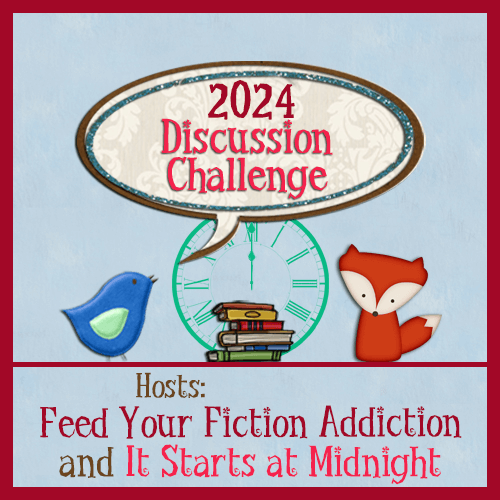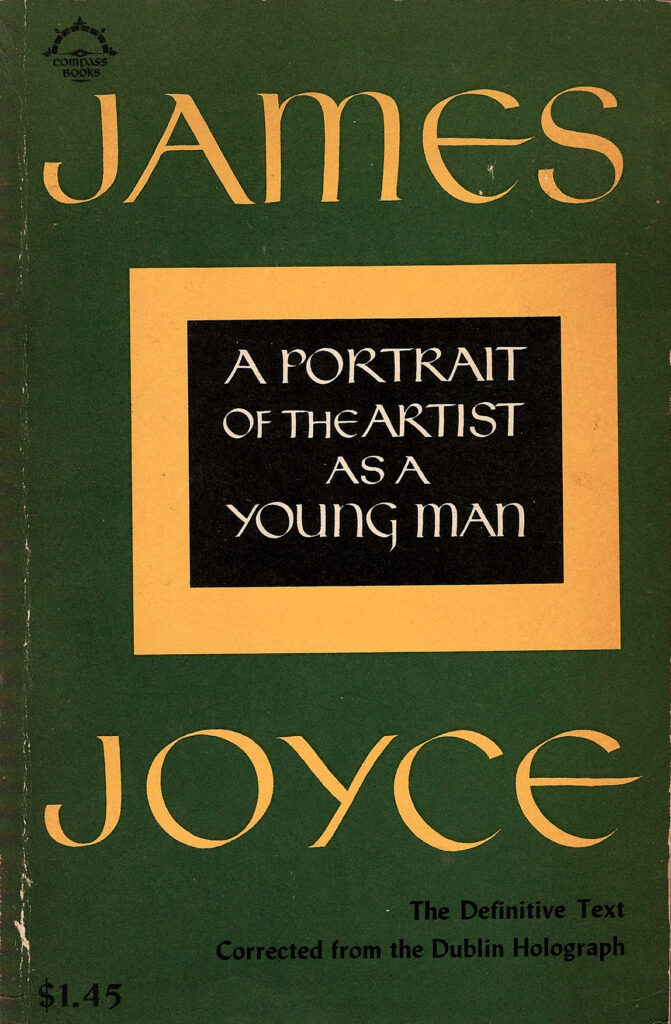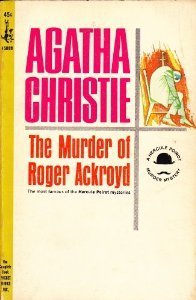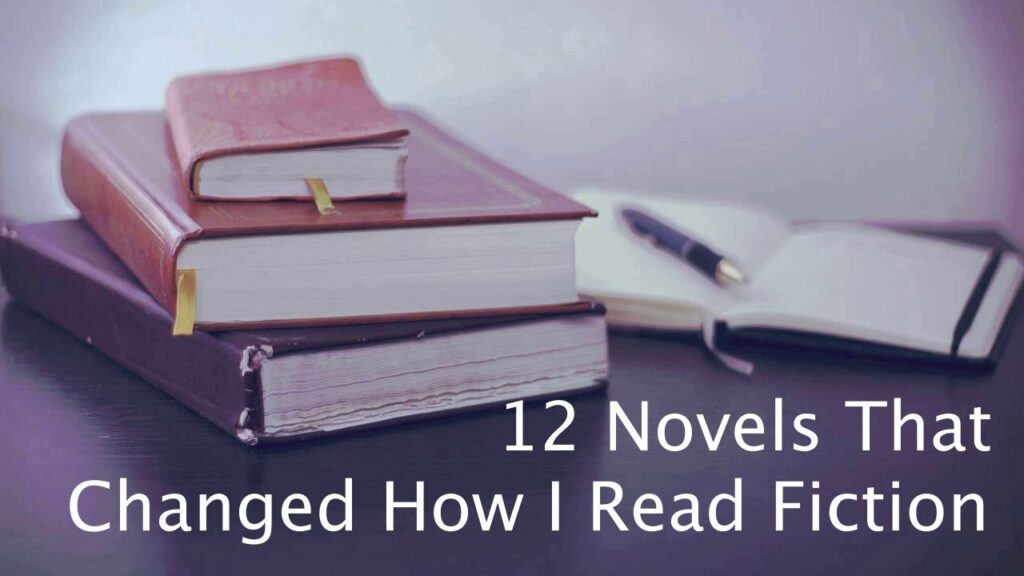Related Post:
Thanks to these two bloggers for sponsoring the annual Blog Discussion Challenge:
- Nicole at Feed your Fiction Addiction
- Shannon at It Starts at Midnight

This week I offer two selections because there’s not much I can say about #3 without giving away the whole point.

#2 A Portrait of the Artist as a Young Man by James Joyce
© 1916
Date read: ca. 1966 or 1967
While I now credit Gillian Flynn’s novel Gone Girl with opening my eyes to the topic of Life Stories in Literature, Joyce’s Portrait of the Artist is probably the true source of the concept. I read it in a course on the modern novel my freshman year in college, when I had neither the experience nor the insight and vocabulary to understand and explain its significance.
I came from an unloving, repressive home environment, and I immediately recognized A Portrait of the Artist as the story of a child growing up, becoming a young adult, and beginning to find a sense of personal identity and to build a life based on that identity. Because I was then at the same point in my own life, the novel had a profound effect on me. I still remember vividly two aspects of it.
The first is the image of Stephen imagining his place in the world. While writing the summaries of the novels in this series, I have generally avoided checking the texts because I want to focus on what has stuck with me about these works over the years. However, in this case I have looked up the passage on Project Gutenberg because I don’t remember the whole sequence but want to get the image correct. On the flyleaf of his geography book, Stephen has written more than just his name:
- Stephen Dedalus
- Class of Elements
- Clongowes Wood College
- Sallins
- County Kildare
- Ireland
- Europe
- The World
- The Universe
This dramatic visual image—for the reader—of zooming out into space, away from the boy as he contemplates his relationship to the world, has stayed with me. It demonstrates how his consciousness of both himself and his place in the universe expanded as he matured.
The second aspect of the book that has stuck with me is its focus within Stephen’s consciousness, on how he perceives and interacts with the world around him. His perceptions necessarily change as he grows, and Joyce’s controlled writing demonstrates that maturation process.
Ever since I read Portrait of the Artist, I’ve been consuming fiction in search of insights into how people live their lives, how they handle themselves in certain circumstances, how they overcome (or are overcome by) particular events or experiences.
I was still doing that when, at age 57, I realized that there were still things I needed to learn. I went back to school for a doctorate in psychology because what’s where I hoped I’d find what I was looking for. And I did. I fell into the study of life stories (technically known as narrative identity theory) and wrote my dissertation on the autobiographical writing of five early women physicians in the U.S. I finished my degree in 2011, and Gone Girl was published in 2012. In an epiphany that James Joyce would have appreciated, I suddenly had the life experience and the education to recognize how life story elements can enrich fiction, and Life Stories in Literature was born.
#3 The Murder of Roger Ackroyd by Agatha Christie
© 1926
Date read: ca. 1978

There isn’t much I can say about this book without spoiling it for you. If you’ve read it, you know. If you don’t know, I encourage you to read it. It’s short. You’ll enjoy it, and probably, like me, you’ll never forget it.
It’s one of the books I wish I could read over again for the first time.

I hope you’ll join me next time for a look at Stephen Dobyns’s 1997 novel, The Church of Dead Girls.
© 2024 by Mary Daniels Brown

